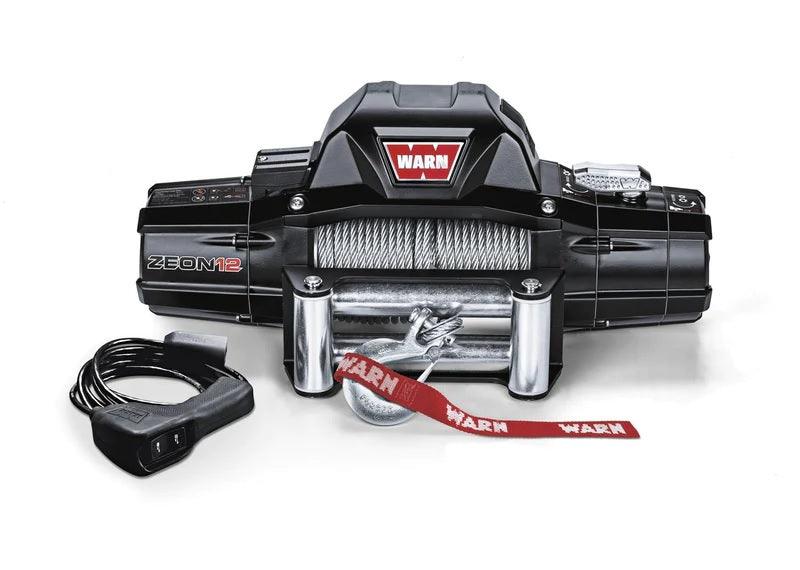Overlanding – that glorious fusion of camping and off-roading – feels like it ought to be the ultimate paradise for minimalists; after all, an overlanding journey is just you, a buddy or two, and your vehicle going wherever the trail takes you. But the truth is, overlanding safely and enjoyably requires a heck-of-a-lot-a gear. A true overlanding adventure is never just you against the open road; it's you, your truck, and all your gear against nature and everything she might throw at you.
You've got to be prepared.
Here's a list of must-haves for any overland journey.
Emergency Gear
Most overlanding trips take you far off the beaten path. That means you must bring your own emergency gear to prevent emergencies from turning into disasters or tragedies. Your emergency kit needs to include the following:
- First Aid Supplies. A well-stocked first aid kit in its own sturdy carrying case should contain all the basics plus a guide on how to use them.
- Lighting. Poor visibility or a complete lack of light makes any emergency doubly difficult. You'll have to have light if you need to perform first aid tasks or repair your vehicle. Flashlights, lanterns, and extra batteries packed near your other emergency supplies will help you respond quickly and efficiently. A headlamp is also a great idea as it provides bright light where you need it and keeps your hands free.
- Heat. If your destination and the weather conditions feature low temperatures, heat supplies like fire starters, blankets, and insulating wraps are critical. Prolonged exposure to chilling temps is dangerous, so be sure to bring along plenty of options to keep you warm.
- Extra Food and Water. Food and water are a given – you've got to eat and stay hydrated. But extra food and water must be part of your emergency plan so that a delay or difficulty doesn't leave you stranded without the food and water you need to keep going.
- Communication. Getting off-grid is part of the goal of overlanding, but you still need to have a reliable tie to civilization, just in case you need it. If an accident occurs, someone gets injured, or you find yourself lost, sat phones, radios, or walkie-talkies can get you the help you need.
- A Map. A paper one. Yes, GPS navigation, your phone, and all that good tech stuff are great. But if you're going off-road, there will be a moment when the only way to figure out where you are and where you need to go is to pull out a paper map and figure it out the old-fashioned way. And honestly, the process is incredibly satisfying.
Repair Gear
Going off-road can be hard on your vehicle. Since you're on your own, you'll need to be prepared to make repairs while on the trail by bringing along some basic tools and having the skills to use them. Your repair supplies need to include the following:
- Gloves. You don't want to make a repair situation worse by cutting your hands in the process. A sturdy pair of work gloves will keep your hands safe from injury.
- Hand Tools. Wrenches, ratchets, screwdrivers, and the rest will come in handy for most repairs.
- Tire Repair Kit. Chances are high that you'll experience a flat tire. A tire repair kit will get you going again.
- Off-road Jack. An off-road jack will make repairing that tire easier and help you gain access to other parts of the vehicle as well.
- Air Compressor. A portable air compressor lets you manage the pressures in your tires for optimal performance. Plus, it makes it fast to pump up your air mattress or your favorite pink flamingo floatie.
- Portable Charger. Dead car batteries are another common overlanding dilemma. With a portable charger, you can jump-start your vehicle wherever you are.
- Duct Tape and Cable Ties. With these in your repair kit, you can hold almost anything together until a more permanent solution is available.
Recovery Gear
Getting yourself out of sticky situations like slippery ice, boggy mud, or fields of giant boulders is part of the challenge and adrenaline rush of off-roading. Your recovery gear needs to include items such as these:
- Winch. A winch plus hackles, ropes, straps, and tree protectors will get your vehicle out of almost any jam.
- Anchor. You need a secure anchor, usually a tree or rock, to use your winch. But what if one isn't available? If you know that above-ground anchors will be scarce where you're going, an earth anchor is a solution.
- Recovery Boards. Traction mats and recovery boards provide traction and are faster and easier to use than winches. These boards can also be used as shovels or a stable pad for placing a jack.
- Shovel. It's never a bad idea to bring along a shovel.
Plus All the Other Stuff…
You'll notice that the list above doesn't include food, tents, sleeping bags, water, clothing, or anything else. As we said before, overlanding takes a lot of gear. That's why you need to call the folks at Backwoods Adventure Mods. We are passionate about off-roading and overlanding, as you'll discover when you learn about Backwoods Adventure Mods. We make and sell the gear you need to make your next epic adventure one to remember. We've also got storage solutions to help you keep all of it organized, secure, and protected from the weather.
Start your next overlanding journey at Backwoods Adventure Mods.


1 comment
Extreme Arizona
Your article on “Off-Road and Overlanding Tools You Should Always Have” is an invaluable resource for adventure enthusiasts! The comprehensive list and expert recommendations you’ve provided are a testament to your knowledge and dedication to helping fellow adventurers prepare for their journeys.